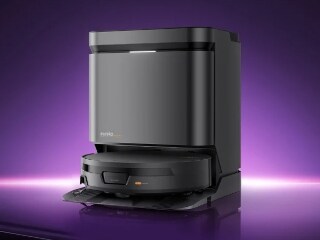- Home
- Internet
- Internet News
- Microsoft Goes Underwater for a Data Center Solution
Microsoft Goes Underwater for a Data Center Solution

Microsoft has tested a prototype of a self-contained data centre that can operate hundreds of feet below the surface of the ocean, eliminating one of the technology industry's most expensive problems: the air conditioning bill.
Today's data centres, which power everything from streaming video to social networking and email, contain thousands of computer servers generating lots of heat. When there is too much heat, the servers crash.
Putting the gear under cold ocean water could fix the problem. It may also answer the exponentially growing energy demands of the computing world because Microsoft is considering pairing the system either with a turbine or a tidal energy system to generate electricity.
The effort, code-named Project Natick, might lead to strands of giant steel tubes linked by fiber optic cables placed on the seafloor. Another possibility would suspend containers shaped like jelly beans beneath the surface to capture the ocean current with turbines that generate electricity.
"When I first heard about this I thought, 'Water ... electricity, why would you do that?' " said Ben Cutler, a Microsoft computer designer who is one of the engineers who worked on the Project Natick system. "But as you think more about it, it actually makes a lot of sense."
Such a radical idea could run into stumbling blocks, including environmental concerns and unforeseen technical issues. But the Microsoft researchers believe that by mass producing the capsules, they could shorten the deployment time of new data centres from the two years it now takes on land to just 90 days, offering a huge cost advantage.
The underwater server containers could also help make Web services work faster. Much of the world's population now lives in urban centres close to oceans but far away from data centres usually built in out-of-the-way places with lots of room. The ability to place computing power near users lowers the delay, or latency, people experience, which is a big issue for web users.
© 2016 New York Times News Service
Catch the latest from the Consumer Electronics Show on Gadgets 360, at our CES 2026 hub.
Related Stories
- Samsung Galaxy Unpacked 2025
- ChatGPT
- Redmi Note 14 Pro+
- iPhone 16
- Apple Vision Pro
- Oneplus 12
- OnePlus Nord CE 3 Lite 5G
- iPhone 13
- Xiaomi 14 Pro
- Oppo Find N3
- Tecno Spark Go (2023)
- Realme V30
- Best Phones Under 25000
- Samsung Galaxy S24 Series
- Cryptocurrency
- iQoo 12
- Samsung Galaxy S24 Ultra
- Giottus
- Samsung Galaxy Z Flip 5
- Apple 'Scary Fast'
- Housefull 5
- GoPro Hero 12 Black Review
- Invincible Season 2
- JioGlass
- HD Ready TV
- Laptop Under 50000
- Smartwatch Under 10000
- Latest Mobile Phones
- Compare Phones
- Motorola Signature
- Vivo Y50e 5G
- Vivo Y50s 5G
- Realme 16 Pro+ 5G
- Realme 16 Pro 5G
- TCL Nxtpaper 70 Pro
- OPPO A6 Pro 5G
- Honor Power 2
- Zephyrus Duo 16 (2026)
- Asus ROG Zephyrus G16 (2026)
- Realme Pad 3
- OPPO Pad Air 5
- Xiaomi Watch 5
- Huawei Watch 10th Anniversary Edition
- Acerpure Nitro Z Series 100-inch QLED TV
- Samsung 43 Inch LED Ultra HD (4K) Smart TV (UA43UE81AFULXL)
- Asus ROG Ally
- Nintendo Switch Lite
- Haier 1.6 Ton 5 Star Inverter Split AC (HSU19G-MZAID5BN-INV)
- Haier 1.6 Ton 5 Star Inverter Split AC (HSU19G-MZAIM5BN-INV)

















